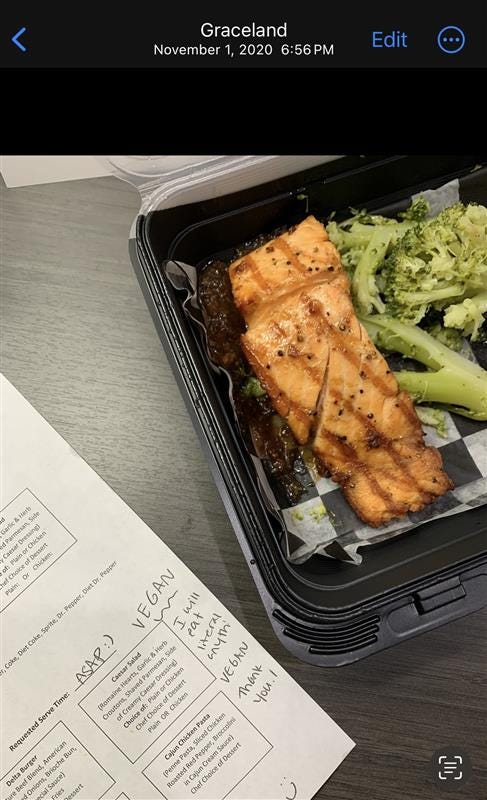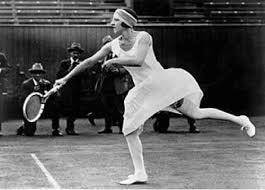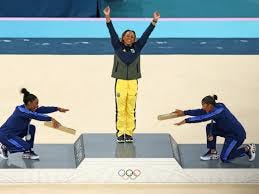Women's Empowerment in the name of Botox and Chick fil' A
Ladies, get to sparklin if you want to get into the winners circle!
The Olympics and Miss USA have taken up the majority of my media consumption over the past few weeks. And while you may not think the two have much in common, there are a few core pieces that intersect the Venn Diagram cross over of elite athletes and beauty queens.
Miss USA once yielded the tagline of “The most beautiful women in the world.” But in recent years, they’re touting the contestants as “Women that are empowered and intelligent” rather than women that are only regarded for their appearance. The organization has sought to change their narrative and social impression through highlighting the brains and accomplishments of each contestant. However, as the pageant continues, exceptional beauty and thinness remain a requirement to hear your name called at the end of the Miss USA competition. Speed, agility, and strength are the attributes you would initially think are required to hear your name at the end of an Olympic competition, but not if you’re a woman.
You may be hard pressed to discover any training similarities between Olympians and winners of the Superbowl of pageants, Miss USA or Miss Universe; however, one disturbing requirement remains held firmly in place. Beauty Standards.
Commercials airing during the Olympics are as highly regarded as those debuting during the Superbowl, encouraging fans to remain glued to their screens even when their favorite athlete is on pause. Some of the commercials have been impressive, like the Hyundai “It’s OK” spot and Visa’s “The Journey”. Some failed, like ADT completely missing the mark showing a commercial that initially follows the story of a Black woman’s life and abruptly switches to a White mom and son experiencing a break in, confusing audiences everywhere. Yet, there is one that nearly threw me out of my seat in horror and disbelief.
World famous gymnast Nastia Luikin narrated an ad across my screen. “1 in 2 women cite a lack of confidence in the workplace. This is the confidence gap.” The commercial is filled with women-forward messaging, female entrepreneurship, and the importance of funding women led businesses. The hopeful music in the background accompanied by clips of female athletes in a training gym encouraged me to remain interested in the story, and I was nearly fooled. “To learn more about the confidence gap,” Nastia continued. ”Follow along at Botox.com.”
“WHAT!” I screamed out, launching up from my seat. “No way!” My boyfriend gasped as we stared at each other in disbelief.
“Hey, come watch this!” We screamed out to his roommate. We rewound and watched the commercial from the start. I kept a close watch of his expressions as the ad came to a close, and as Botox flashed across the screen his eyebrows raised and his voice boomed, “REALLY?!” in total disbelief. “REALLY?!”
From the competition floor to the board room, women are working hard, they just can’t have the lines to show it.
Out of all of the commercials during the Olympics broadcast, a large percentage were ads for body modifying products, only depicting women. Cool Sculpting ads and lash extending mascara commercials all had placements on my screen. Not a single body modifying product was directed at men. This year's Olympics has been dominated by women breaking records and creating a feeling of unity in the hearts of viewers. But as we watch, a message of something other than unity dribbles into our minds.
On Sunday August 4th, Alma Cooper from Michigan was crowned Miss USA. Keeping a somewhat close eye on the competition, I flicked through the Instagram stories of various contestants. While doing so, much like viewing the Botox commercial, I was forced to take a distinct pause.
“Thank you for providing us with a delicious dinner @ChickfilA!” A state titleholder shared an image holding a white and red Chick fil’ A take out box. To say I freaked out would be a mild understatement. This Instagram story was posted on the day of the preliminary competition, meaning the contestants were scheduled to walk across the stage in a bikini within a few hours.
Year after year the criticism of beauty pageants grows, arguing that there is no modern reason to judge women in high heels wearing a bikini. What is the judgment based on? Their ability to keep their stomach flat and have their hair bounce just enough subsequently merits them to have the opportunities of a Miss USA? As critics are rightly doubting the relevancy of the swimsuit competition, deeming it a sexualization of women’s bodies for the male gaze, the organization has pushed back by touting the segment as not a judgment on thinness, rather a depiction of health. “The swimsuit competition hasn't ever been about being sexy. It's about showcasing your dedication to your health and fitness…” a former Miss USA states. This former Miss Montana USA rolls her eyes at that wildly untrue statement. The organization, in no regard, cares for their contestants health or fitness.
Back in 2020, when I arrived at the Miss USA competition, I was required to isolate myself due to Covid-19 and was served dinner alone in my hotel room. The meal they sent was salmon even though my entire platform revolved around Veganism and Animal Rights. I called a chaperone and told her what I was delivered, she informed me that they had no other options and that I wasn’t allowed to attain food on my own. Though I was starving from a full day of traveling across the county, I was left to eat just a protein bar I packed and snuck one to a fellow vegan contestant down the hall.
During my time in Tennessee, we weren’t allowed outside of our rooms for anything other than pre-scheduled group events, the very few that there were, and were required to be accompanied by a chaperone at all times. We had no access to a gym, were not allowed on walks of any kind, and didn’t have the right to order or access food outside of specific scheduled meals provided for us. The Vegan meal options were incomplete, not consisting of protein, carbohydrates, healthy fats, and micronutrient-rich vegetables. One night, I was assured an item was Vegan and as I sat down to eat, a cook ran after me yelling “Never mind, it’s not Vegan don’t eat it!” The day of the preliminary competition and finals night, we were served chicken tenders. Tired of constantly asking what options I had to fit my unique dietary needs, I chose to forfeit eating the provided meal and had a another protein bar. Shout out to GoMacro for being the best Vegan protein bars out there. During my time at Miss USA, not once did I feel full after a meal.
Perusing the Chick fil’ A menu there are options of fried chicken tenders, a chicken wrap, fried and grilled chicken sandwiches on white buns, and a few measly salad options consisting of a bed of lettuce stacked with chicken on top. There is not one vegan or vegetarian option that has adequate protein for a meal, not to mention the fact that chickens are some of the most heinously abused farm animals and are forcibly filled with hormones and antibiotics due to their inhumane living conditions.
The swimsuit competition, and the pageant as a whole is not a nod to health and fitness, rather a demand to thinness, by any means necessary. Forcing contestants to remain isolated and sedentary, while providing processed meals consisting of little to no vegetables provides a clear statement that health is not the priority. Not one plus size contestant walked the stage during my pageant in 2020 or the this years Miss USA competition (and I don’t think any other’s to be quite honest, though correct me if I’m wrong) and the entirety of the Top 20 on finals night held a very small stature. Dare I say, it was one of the thinnest years to my memory, bringing me back to the 2011 era of pageantry.
With the high demand of thinness required in beauty competitions, to suggest that the contestants are consuming an unhealthy meal like Chick fil’ A the day of competition is disingenuous. Harmful not only to the contestants but also to impressionable viewers, especially those who might not understand why their bodies don't look like a Miss USA's. For example, viewers restraining themselves to a strict diet and striving to achieve a certain appearance may be confused and discouraged when they see a Miss USA seemingly consuming fast food, despite their own efforts to look like the women on screen.
Pressing the question further, if Chick fil’ A is a sponsor, does a vegan, vegetarian, or health conscious contestant stand a chance? Furthermore, with two openly LGBTQ+ titleholders taking the stage, are they given the option to either support a company that wants to deny them their rights or not have a chance at the title at all? Promoting sponsors is a pivotal aspect of titleholder responsibilities, and the organization is not shy about their intention to observe how well and how often you post about said sponsors.
In Paris, women have dominated the Olympics, displaying superior athleticism, dedication, and heroic stories like Kristin Faulkner taking home the Cycling gold medal after her teammate dropped out, listing her to compete at the last minute. Women only gained the opportunity to compete at the Olympics in 1900 and were allowed access to only five sports: tennis, sailing, croquet, equestrian, and golf. At that time, only 22 women competed out of 997 total athletes. Today, 10,500 athletes will attempt to win a medal, half of which are women. While the statistics are promising, and the US women athletes have taken home more medals than all of Australia and France, I can’t help but notice how…pretty they are.
Women’s gymnastics is arguably the fan favorite countrywide, gaining a powerful and dedicated fanbase. For the first time in history three Black women stood at the winners podium for the floor exercise. Simone Biles and Jordan Chiles winning silver and bronze, respectively, kneeled and pointed to gold medalist Rebeca Andrade of Brazil after her picture perfect floor routine. Gymnastics is incredibly engaging and thrilling to watch. Coming from someone who can’t even do a cartwheel, I cannot even begin to fathom how anyone can tumble, bend, and flip with such precision and strength.
After watching Rebeca’s winning display, I was curious as to how the men's competition measured up to the A-list status of the women’s. The difference made me laugh. The men were much less structured, often fumbled their landings, and simply looked messy. Eventually, I came to the conclusion that, compared to the women, they kind of looked like they weren’t even really trying. I flipped back and forth between Rebeca’s winning routine and male counterpart, Carlos Yulos’ of the Philippines gold medal performance and found myself watching all of the top performances to discern the difference.
The women were engaging, jubilant, and resolute. The songs they danced to were upbeat, their leotards sparkling and perfectly tailored. Their hair and make-up blended to perfection. As I clicked over to the men, the silence cooed. The floor reverberated as each gymnast didn’t quite ever really stick a landing. Their hair flopped around messily and their uniforms reminded me of a high school gym class. Overall, watching men's gymnastics was an experience of total underwhelm.
Not understanding particularly why the women danced to a soundtrack while the men flipped in silence, I turned to the internet. An interview with former international gymnast and author Georgia Cervin on CNN helped me understand.
“When the sport was developed for women, they adapted the men’s sport to make it ‘appropriate’ for women. Women were expected to do soft, rhythmic, flowing, graceful movements that emphasized beauty and flexibility. This is why they perform to music, and the men don’t. Men’s floor routines were expected to emphasize strength instead.”
The introduction of women into Olympic gymnastics revolved around grace, beauty, and flexibility, while men competed to be strong. A showcase of a little razzle dazzle was the only way for someone other than a man to walk onto the competition floor. The female athletes are even judged on whether or not their leotard is of “elegant design,” with no clear parameter as to what that requires. In order for women to showcase their athleticism, they must first sparkle, smile, and do a little shimmy to upbeat music; because why would anyone want to watch women in gym shorts do flips without music, the same way they do with big strong men? And don’t even get me started on women’s beach volleyball vs mens.
While the goals of Miss USA and the Olympics are far removed from one another, the messaging remains the same. Regardless of your strength, speaking ability, or accomplishments, you as you are is not enough. But, if you use enough Botox and blindly promote brands that harm humans and animals alike, perhaps you can be a woman deserving of a medal or a crown.
Women remain enslaved to beauty standards. Encouraged to ingest toxins, despite the negative implications, assuring that our exterior remains consumable and desirable. We must ask, are the individuals supporting and upholding beauty standards, such as the women who grace the prestigious Miss USA stage and elite athletes like Nastia Luikin responsible? Am I responsible for promoting a Botox sponsor during my reign as Miss Montana USA? (I think yes.) Or simply, are these everyday women attempting to win in an unconquerable world with a different set of rules forced upon them?
The Miss Universe organization recently removed nearly all requirements to enter competition, the three rules remaining are as follows:
Be over 18
Be female, or have gender affirming surgery
Be a permanent resident of the state entered (we know this is a very loosey goosey rule ;)
This rule change ignited the desire for women of all backgrounds to sign up for their state pageants, and we saw some change; women in their 30’s, mothers, divorcees, and trans women heard their name called at the end of their respective competitions, taking home the crown.
With the resumes of the new titleholders expanding to new heights and breaking previous boundaries, it seemed as though we were heading for a new taste of diversity and inclusion. However, at the 2024 Miss USA competition, of the 20 names moving onto finals, none were married, over 27, had children, were transgender, or plus size. Anne’s recording of “they can compete, but they can never win” rang in my head repeatedly.
Beauty pageants and elite sports have long been a gateway for individuals to gain access to opportunities, education and success. The demands that women exclusively face in regard to their bodies place unnecessary stressors and often lead to dangerous outcomes.
Additionally, why are these opportunities only afforded to women who adhere to traditional beauty standards? Some women will never gain access to major pageant stages, regardless of their extreme efforts, as their bodies are not deemed worthy by those in power, no matter how much Botox, filler, or Cool Sculpting they apply. The uncomfortable conversation regarding gatekeeping beauty remains. Some women, despite their attempts to morph themselves into someone deemed socially beautiful, will never have the opportunity to hear their name at the end of their respective pageant competition. I’ve been backstage too many times overhearing make up artists and directors alike discussing the contestant who returns year after year but will never win due to the size of her nose.
Furthermore, what about the women who don’t wish to modify themselves? Are they not granted financial backing for their entrepreneurial ventures? The women who aren’t able to be, and more importantly, the women who don’t want to be a size 0? The women who stand up for themselves and refuse to promote a brand that sought to erase the LGBTQ+ community? No crown and sash for them. They’re too difficult.
Miss USA and the Olympics represent themselves as organizations with evolved and inclusive ideologies, yet fail to maintain the standards that are preached to both the public and directly to each competitor. Women gymnasts are subject to point deductions if their leotard isn’t of “elegant design” while the men don floppy gym shorts and unkept hair. Miss USA is as beautiful and thin as ever, and I am filled with doubt that she, or any of the other top placing contestants devoured their sponsored and heavily promoted Chick fil’ A meal. To enter the room, women must first sparkle, have botox, be thin, and smile alongside any brand or business they’re told to. If you want to win, girlfriend, get to smilin, and leave behind the opinions.











